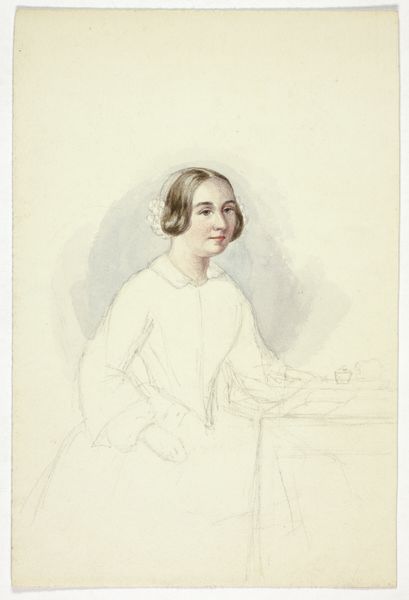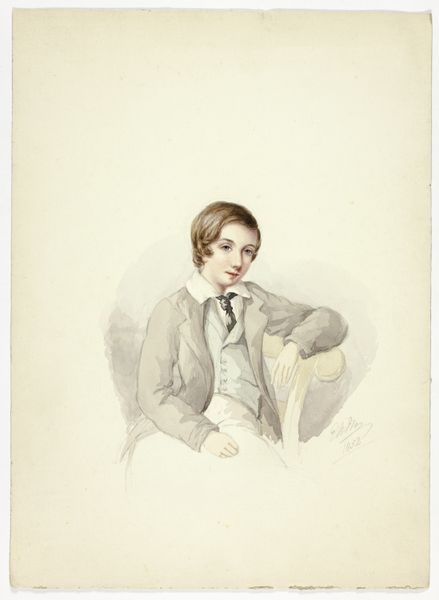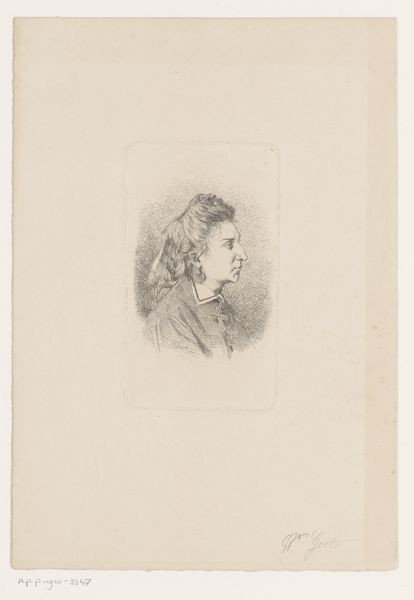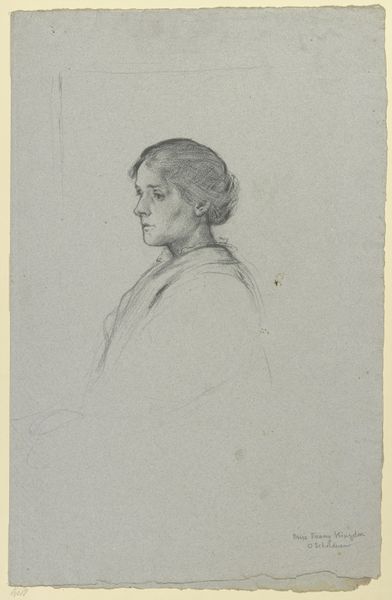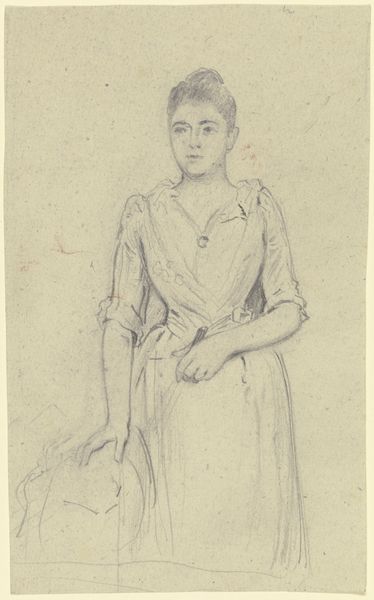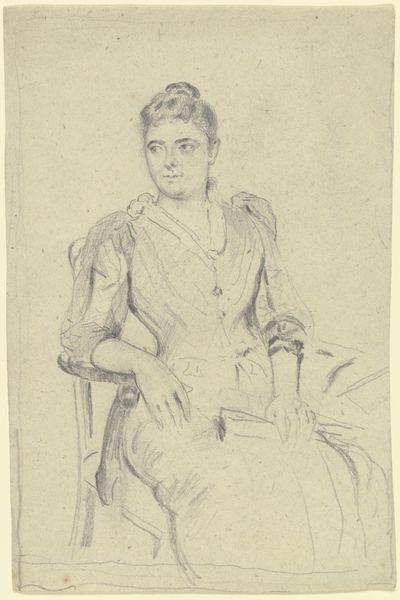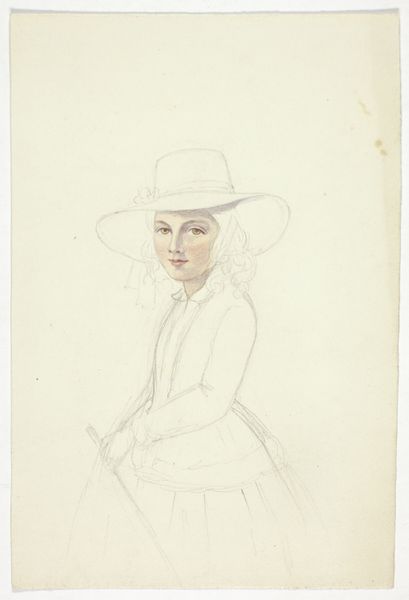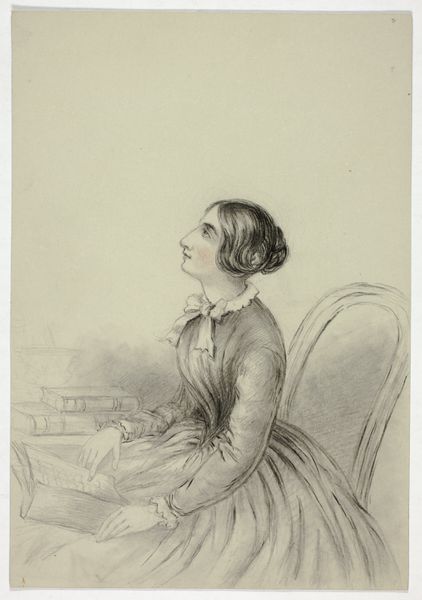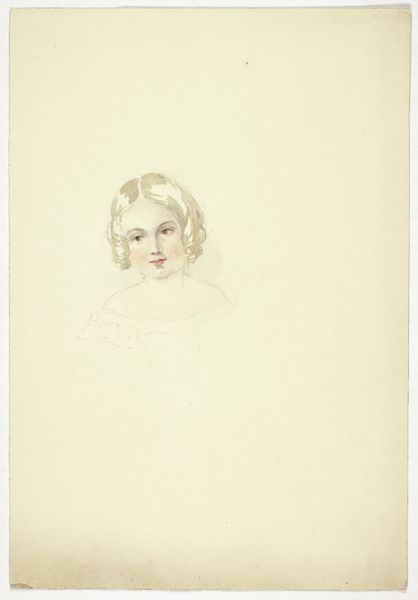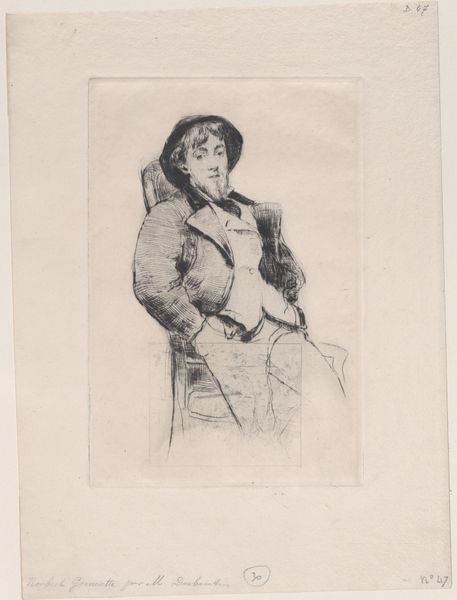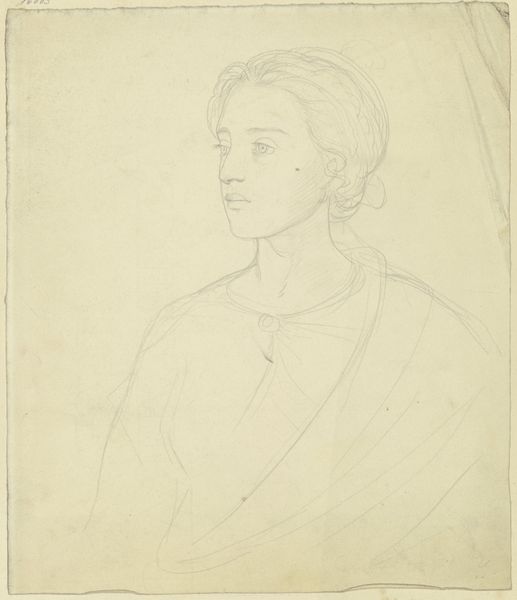
drawing, paper, watercolor, pencil, graphite
#
portrait
#
drawing
#
figuration
#
paper
#
watercolor
#
pencil drawing
#
pencil
#
graphite
#
academic-art
#
realism
Dimensions: 369 mm × 268 mm
Copyright: Public Domain
Curator: This is an interesting piece. We're looking at "Study for Portrait of Boy with Book," an undated drawing at the Art Institute of Chicago. It's rendered with pencil, graphite, and watercolor on paper. What’s your first take? Editor: It feels unfinished, a fleeting impression rather than a fixed representation. The washes of color give it a delicate, almost ethereal quality, particularly around the face. The lines create form, while remaining a subtle roadmap of construction. Curator: The artist has really left their working process visible. We can see the underdrawing, the initial sketches that block out the composition. I think this reveals the labor inherent in portraiture, it exposes how such images are constructed objects, far removed from ideas of the genius of effortless creation. Editor: Absolutely, you're seeing the bones beneath the skin, so to speak. But what strikes me is how effectively even in its unfinished state, the essential features of the boy and the atmosphere, are so compelling. The soft gradation and balance of color tones highlight form without overpowering. The implied lines almost create the rest of the body of the piece, creating wholeness. Curator: Do you think the 'unfinished' quality of the artwork has affected its place within our modern art history discourse, given the emphasis placed on finished pieces of work in the art market and its collecting history? Perhaps we are used to viewing art, of any time period, as perfect end points. Editor: That's an interesting thought; It feels very current despite its realist style. What this unfinished nature offers us is an unfiltered connection to the artistic intention. Without the complete polish of a finalized work, the raw materials of the art, the simple beauty in process and medium, shines brightly. Curator: It does invite speculation on the boy’s social background. What kind of access to education, symbolized by the book, might he have? The garment may indicate this too. I do appreciate the candid way you brought form to the discussion. It gives rise to new angles for looking at art through a socio-economic lens. Editor: It does indeed and thank you. Looking at it formally can also illuminate how the technical framework underscores its material message and meaning.
Comments
No comments
Be the first to comment and join the conversation on the ultimate creative platform.
